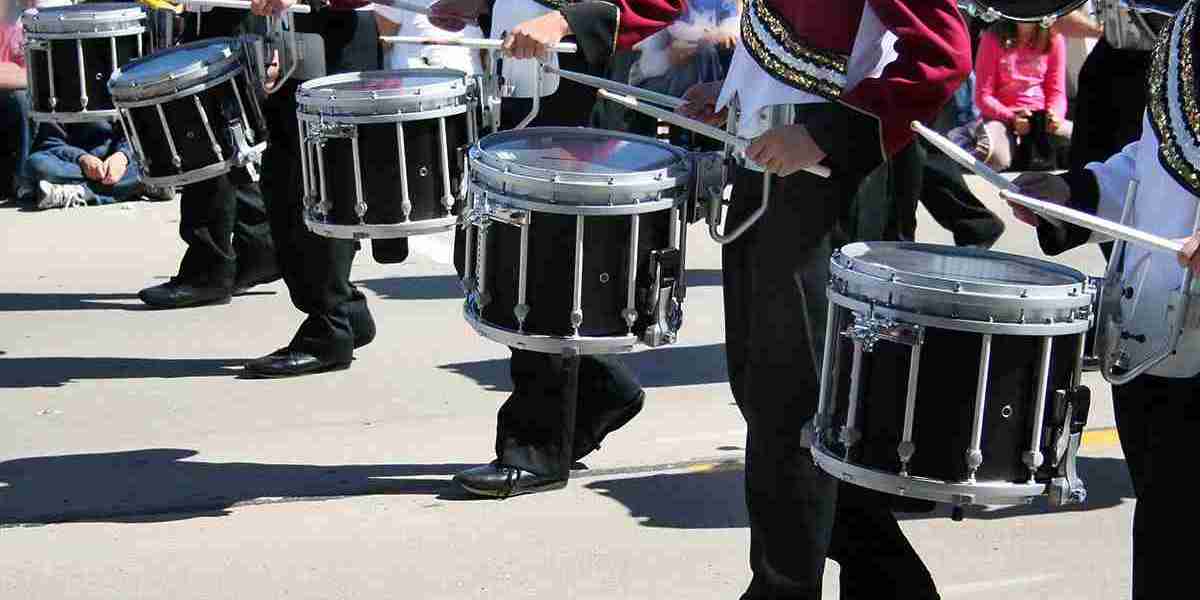In this detailed tutorial, we'll look at the many types of marching band drums and how they add to the band's rhythm and intensity. From the famous snare drum to the lyrical intricacies of tenor drums, we'll go over each drum's distinct qualities and duties.
Types of drums in a marching band
Marching bands are colorful and represent musical and visual creativity, enthralling listeners with accuracy, rhythm, and dynamic performance. The marching band percussion instruments, which consist of a broad variety of drums, are fundamental to this rhythmic extravaganza.
Drums are essential in a marching band because the rhythmic heartbeat pulls the group ahead. Each drum contributes significantly to the marching band's sound and character. Drums bring flare, dynamics, and visual appeal to a band performance. They improve the ensemble's accuracy and play an important part in producing a compelling and coherent musical experience.
The marching band features four drums. This blog will discuss the types of drums in a marching band and the characteristics of these drums in detail.
Snare drums
Snare drums are the marching band's rhythmic focus. They mostly contribute to the harsh, staccato sound that characterizes many drum beats. Furthermore, snare drums are important for adding accents, performing rolls, and combining numerous dynamic components, making them adaptable additions to a drum kit's overall sound palette.
The snare drum is the percussion family's heartbeat, setting the rhythm and providing a clear, unique sound to any musical ensemble.
Tenor drums
Tenors are the lifeblood of the drumline! Tenor drums are a collection of toms assembled on a single frame and worn by the drummer using a harness. This configuration enables several pitches and tones inside a single instrument, resulting in a dynamic and striking presence in marching bands, drum corps, and other percussion ensembles.
Tenors are classified into three types: single, quad, and qunit. These drums are more than simply a source of music; they are also a visual spectacle, adding to the thrill and adrenaline of a performance.
Single tenors
Single tenors, often known as single-headed toms, are a unique and flexible percussion component used in marching bands and drum corps. Unlike multiple-tom configurations, single tenors have a single drum, resulting in a concentrated and dramatic sound that adds rhythm and flare to the ensemble.
Quads
Quads, short for quadruple drums, are four drums of differing sizes set on the same frame. The player creates complicated rhythms using mallets or sticks. They are an important and dynamic component of the percussion section of marching bands and drum corps, delivering a diverse spectrum of tones that contribute to the ensemble's overall rhythmic complexity.
Quints/Squints
Quints, sometimes known as quintuplet toms, are a group of five tom-toms grouped in a single frame, similar to quads. They are a distinct and visually appealing component of marching band and drum corps percussion, giving auditory depth and rhythmic intricacy to the ensemble's overall sound.
Bass drum
In a marching band, the bass drums serve as the basis for the beat. The marching band's huge drum produces deep, resonant tones that add to the percussion section's force and impact.
Timpani
Timpanis, often known as kettle drums, are enormous marching band drumline instruments that date back centuries. They are distinguished by hemispherical copper or fiberglass bowls used with mallets.
Conclusion
Marching band drums are meant to be mobile and precise during outdoor performances. They consist of snare drums, single tenors, quads, quints/squints, and bass drums.








